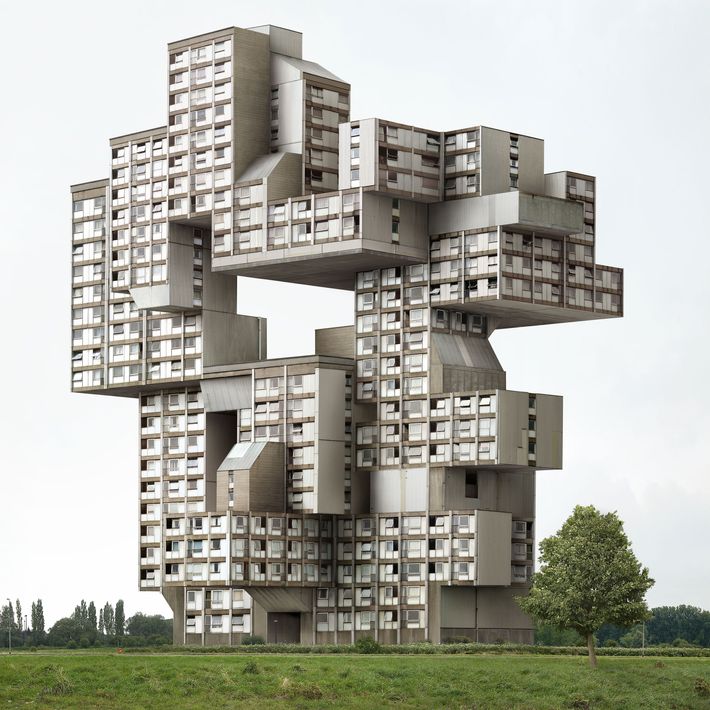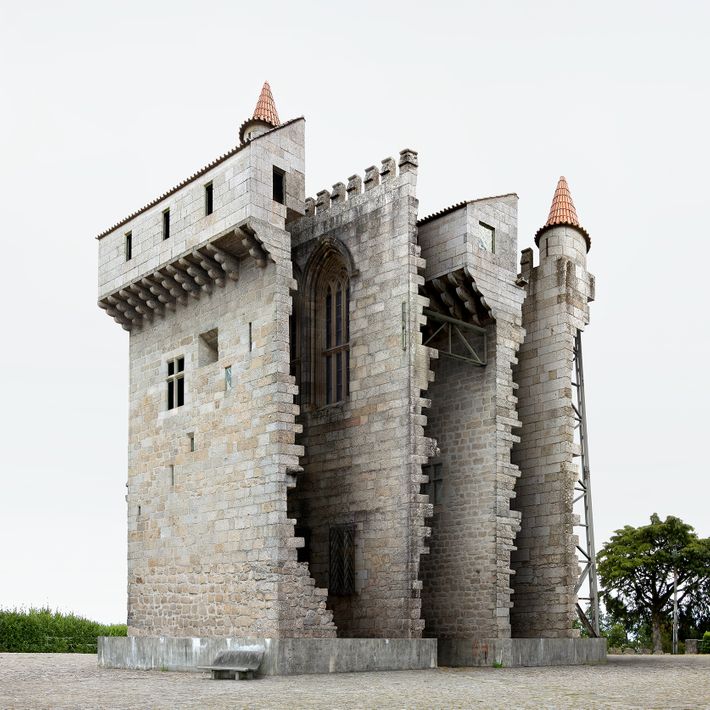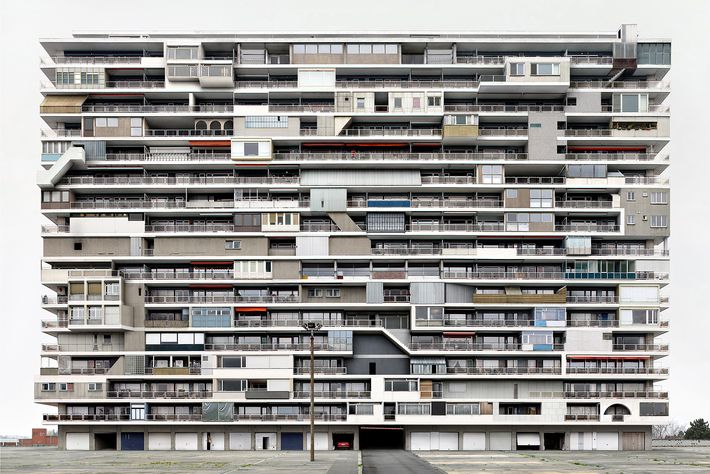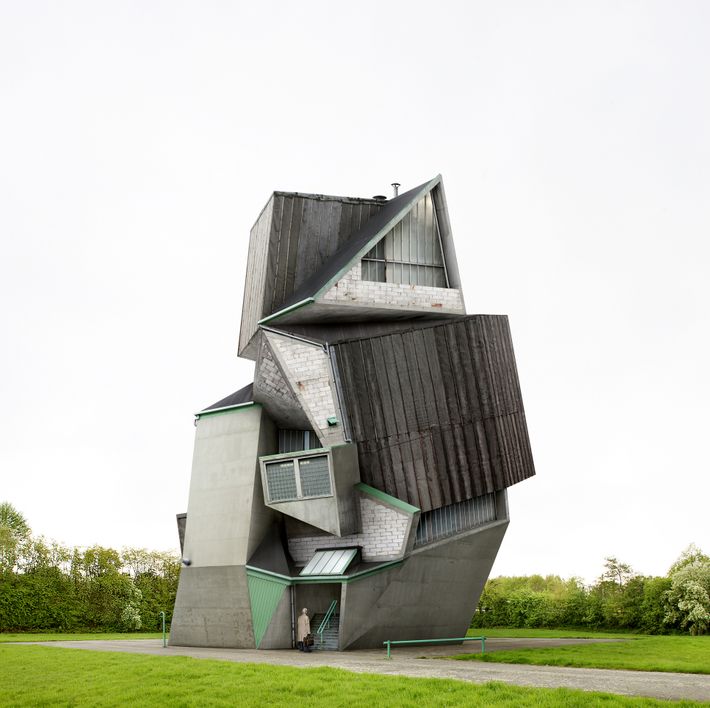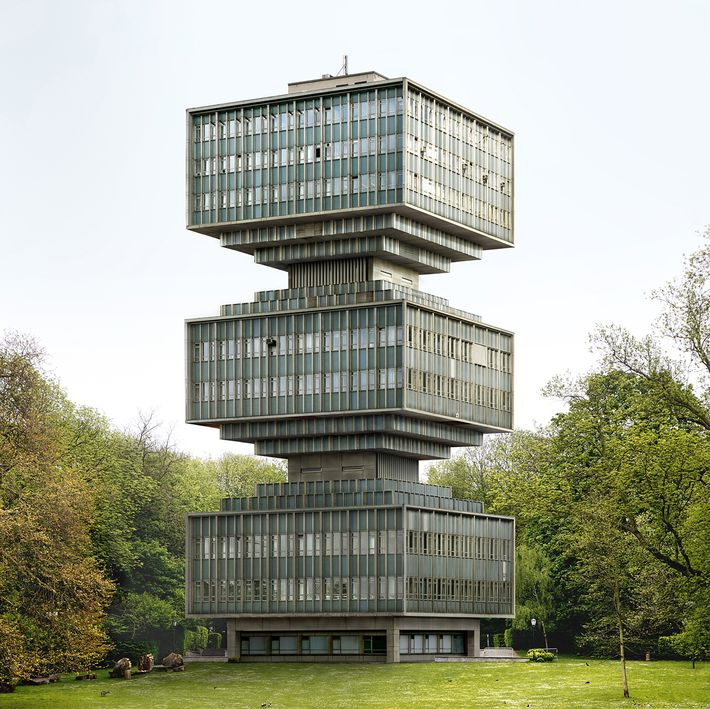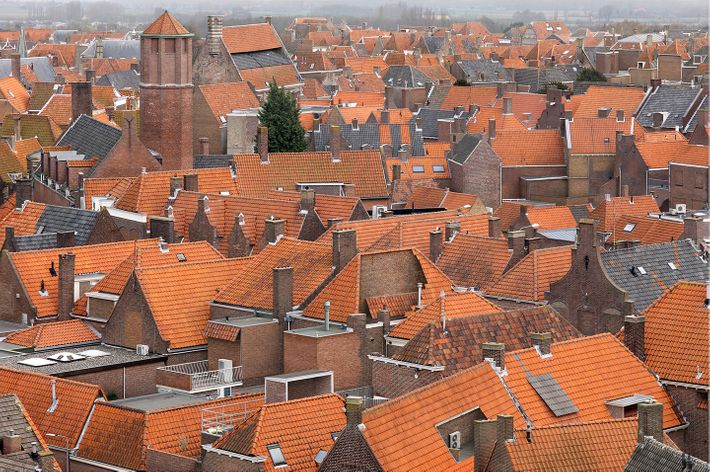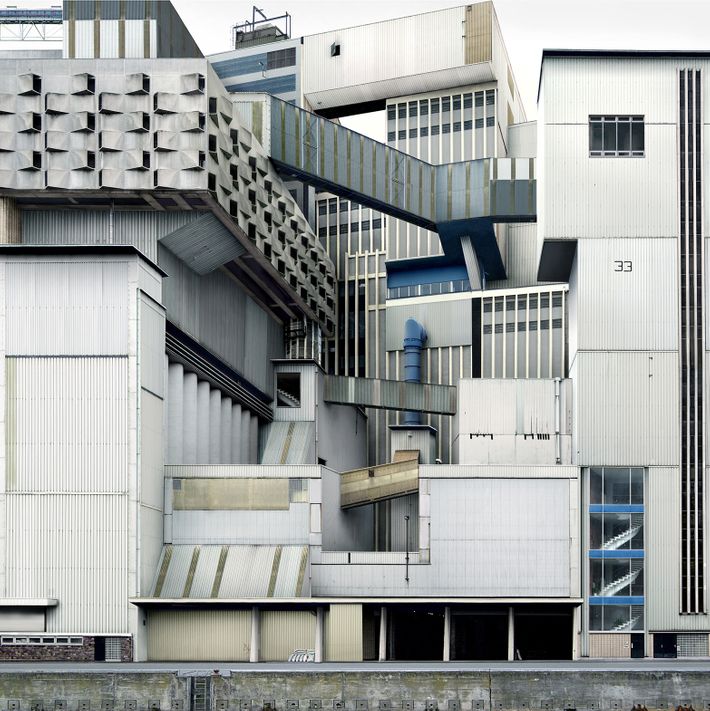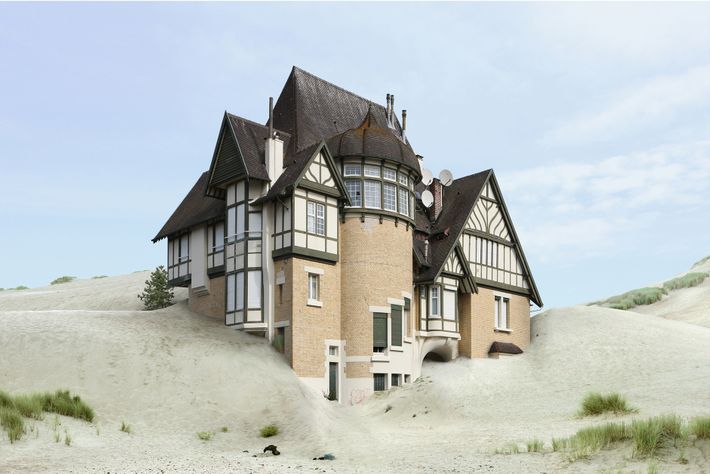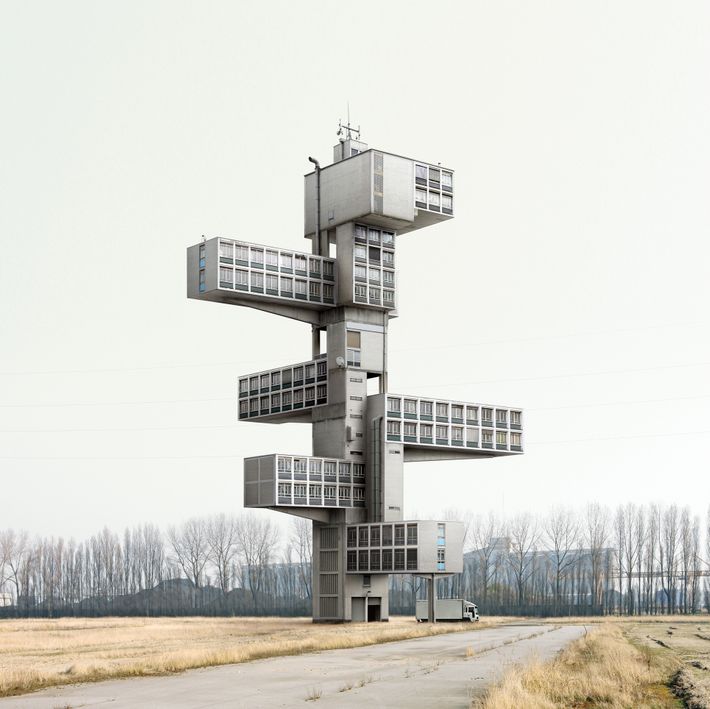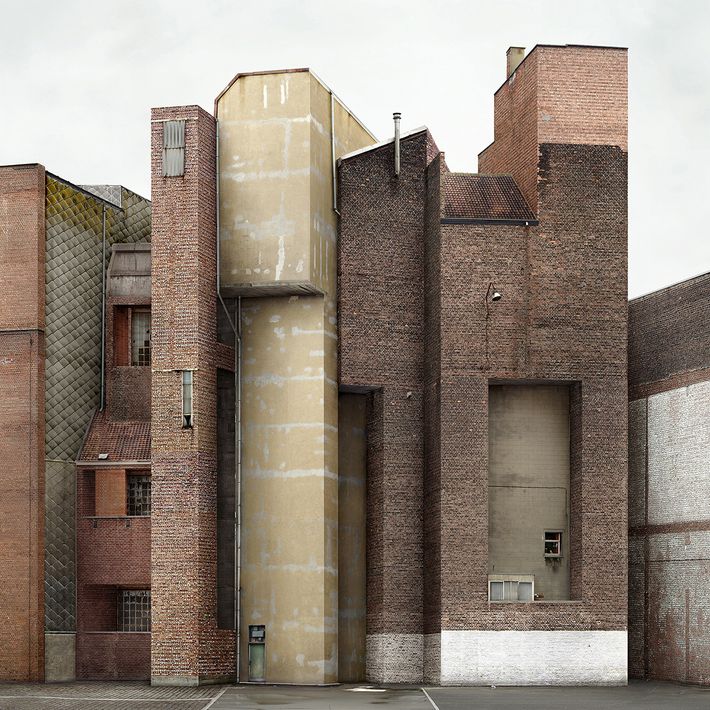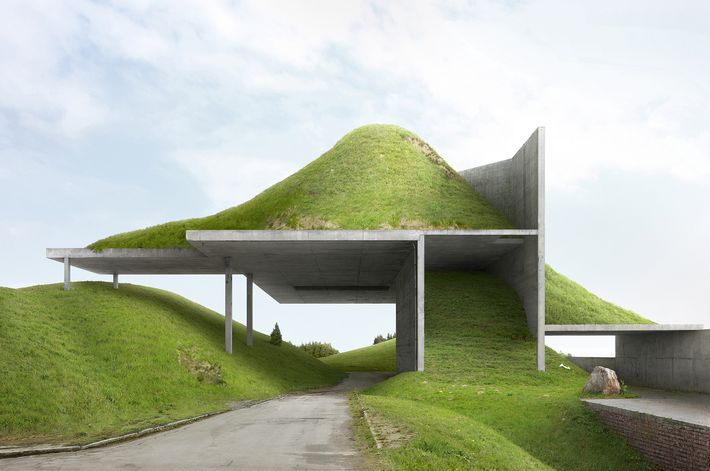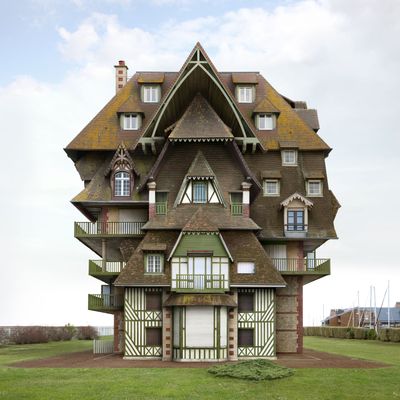
The concept of the architectural folly is an old one. On English estates and in French gardens, landowners would occasionally put up an eccentric outbuilding that existed mostly for its looks. Most follies are overdone, wildly decorated, even ridiculous; one of the most famous is a hothouse that looks like a pineapple. In 20th-century America, theyÔÇÖre echoed in the seemingly unserious buildings the architect Robert Venturi is known for taking seriously, like the L.A. hot-dog stand shaped like a giant hot dog, or Long IslandÔÇÖs Big Duck.
The Belgian photographer Filip Dujardin creates contemporary follies, but his buildings are even more fanciful ÔÇö because they donÔÇÖt exist. They are digital fabulism, assembled from real-life parts into comical, fanciful wholes. (These images all come from his new monograph, Filip Dujardin: Fictions, published by Hatje Cantz.) Most of them, in real life, would not stand up on their own. Others, while theoretically buildable, are, one way or another, ridiculous: contorted floor plans, impossible elevator shafts, no windows, too many windows! Not even Frank Gehry draws like this ÔÇö though one imagines him making his way through this book. And giggling delightedly at every page.
